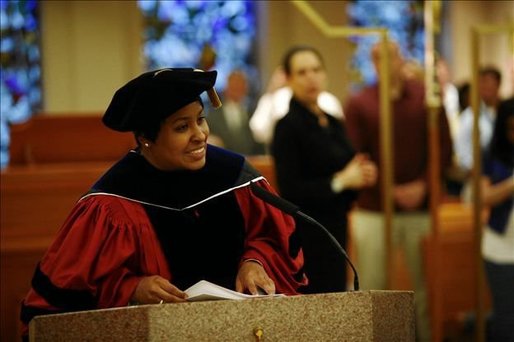Certified teachers are crucial in shaping young minds in the ever-changing field of education. Their impact is undeniable, with over 2,033,623 accredited teachers in the United States alone. However, understanding the complex certification process can be confusing, especially for newcomers to the field.
Whether you’re an aspiring educator or considering a career change, this comprehensive article shows how to become certified teachers in various states. Embark on this journey confidently and transform your passion for teaching into a certified vocation that shapes the future.
- Researching State-Specific Requirements
- Educational Requirements for Teacher Certification
- Choosing a Teaching Specialization
- Enrolling in an Accredited Teacher Preparation Program
- Gaining Classroom Experience
- Meeting Certification Exam Requirements

- Applying for Teacher Certification
- Background Checks and Additional Requirements
- Completing Professional Development
- Transitioning to a Teaching Career
Researching State-Specific Requirements
Navigating the path to becoming a certified teacher involves recognizing the significant variations in certification requirements across different states. Each state possesses unique regulations, prerequisites, and assessments tailored to its educational landscape. Doing so underscores the importance of thorough research into state-specific requirements.
Researching these requisites is paramount as it ensures candidates are well-prepared and meet all prerequisites before starting their certification journey. Failure to comply with state-specific mandates could lead to unnecessary delays or rejections in the certification process.
For example, the Texas Education Agency website stands out as a valuable resource for aspiring teachers in Texas. It provides a comprehensive breakdown of the certification process, outlining necessary exams, educational criteria, and application procedures specific to the state. By utilizing such state websites, candidates can access accurate and up-to-date information, facilitating a smoother certification process and propelling them toward successful careers in education.
Educational Requirements for Teacher Certification
Becoming a certified teacher involves meeting certain educational requirements to ensure educators have the necessary knowledge and skills. One of the main requirements is getting a bachelor’s degree, usually in education or a related field. This degree is the foundation that provides aspiring teachers with teaching methods, strategies, and ways to manage a classroom.
A bachelor’s degree in education provides subject-specific expertise and a deep understanding of educational psychology and curriculum development. It helps teachers better cater to diverse learning styles and engage students effectively.
However, recognizing the evolving landscape of education, many states now offer alternative pathways for candidates with non-education degrees. These pathways acknowledge the value of expertise in various fields. For instance, Career and Technical Education (CTE) pathways enable individuals with industry experience to transition into teaching. They combine real-world knowledge with teaching expertise, connecting practical skills and effective instruction.
Choosing a Teaching Specialization

Teaching specializations are specific subject areas where educators focus their expertise and deliver specialized instruction. When selecting a specialization, consider your passions, strengths, and the needs of the education landscape.
- Personal Interest: Opt for a specialization that genuinely fascinates you. Your enthusiasm will translate into engaging lessons that captivate students’ interest if you’re passionate about a subject.
- Strengths: Leverage your strengths and skills. Choose a specialization that aligns with your natural talents, whether your knack for explaining complex concepts or your ability to inspire creativity.
- Demand: Research high-demand areas in education. Specializing in subjects facing shortages can offer greater job prospects. For instance, English as a Second Language (ESL) is projected to grow by 3% by 2028 due to increasing cultural diversity and the need for specialized instruction.
- Student Needs: Consider the needs of students in your region. Specializations like Special Education cater to students with diverse learning requirements, significantly impacting their academic journey.
- Future Relevance: Stay ahead of the game and keep up with the evolving educational landscape. With technological advancements, the significance of STEM fields has soared, highlighting the pivotal role of Math and Science educators in equipping students for the digital age.
- Community Engagement: Choose a specialization that aligns with your community’s needs. For instance, teaching Agriculture might be especially relevant in rural areas with a solid agricultural base.
- Subject Mastery: Opt for a specialization where you have a strong foundation. Subjects like History or Literature benefit from educators who possess in-depth knowledge.
By thoughtfully considering your passions, skills, demand, and student needs, you can choose a teaching specialization that resonates with you and makes a meaningful impact in the lives of your students and the education system at large.
Enrolling in an Accredited Teacher Preparation Program
Accredited teacher preparation programs are educational pathways designed to equip aspiring educators with the essential skills, knowledge, and practical experiences required for successful teaching careers. These programs are recognized and evaluated by accrediting bodies, ensuring they meet rigorous standards of quality and effectiveness.
Enrolling in an accredited teacher preparation program offers several benefits for individuals seeking teacher certification:
- Quality Assurance: Accreditation guarantees that the program upholds esteemed standards of educational excellence. It ensures you receive a top-notch and comprehensive education, equipping you to thrive as a teacher.
- Alignment with State Requirements: Accredited programs are meticulously crafted to fulfill the precise prerequisites of the state’s teacher certification process. As a result, you will undergo training that perfectly aligns with the essential skills and knowledge required to conquer state-mandated exams and attain certification successfully.
- Access to Resources: Accredited programs often provide access to a wide range of resources, including experienced faculty, up-to-date curriculum, and classroom observations. These resources enhance your learning experience and readiness for the classroom.
- Networking Opportunities: Accredited programs often foster a supportive learning community. You’ll have the chance to connect with fellow aspiring teachers, mentors, and experienced educators, building a network that can prove invaluable throughout your career.
- Smooth Certification Process: Completing an accredited program streamlines the certification process. State education authorities recognize the credibility of these programs, which can expedite your journey to becoming a certified teacher.
Aspiring educators can refer to the Association for Advancing Quality in Educator Preparation (AAQEP) website to identify accredited teacher preparation programs. AAQEP evaluates and approves programs that meet their rigorous standards, ensuring that candidates have access to education that positions them for success in the classroom. Choosing an accredited program is a crucial step toward attaining the skills and credentials necessary to make a lasting impact as an educator.
Gaining Classroom Experience
Gaining practical classroom experience is crucial for becoming an effective educator. It helps connect theoretical knowledge with real-world application, allowing aspiring teachers to improve their teaching strategies, classroom management techniques, and student engagement methods. Student teaching requirements and internships play a vital role in this process.
Student teaching involves a supervised placement in a classroom, where aspiring educators closely work with experienced teachers to observe, assist, and eventually lead lessons. This hands-on experience provides valuable insights into classroom dynamics, diverse student learning needs, and challenges faced by educators. It’s an opportunity to practice lesson planning, adapt teaching methods to different student abilities, and foster a nurturing classroom environment.
Internships, often offered by teacher preparation programs, give students more opportunities to learn through experience. These can involve assisting in after-school programs or supporting teachers in specific subjects. Such internships allow candidates to explore various aspects of teaching, interact with diverse student populations, and develop a better understanding of the education system.
Practical classroom experience enhances teaching skills in many ways. It helps teachers adapt to different learning styles and challenges, manage classrooms effectively, and create an inclusive learning environment. It also improves communication skills, as teachers must explain complex concepts in ways students understand. Moreover, aspiring teachers benefit from constructive feedback from experienced mentors, which supports their ongoing growth and improvement.
Meeting Certification Exam Requirements
Meeting certification exam requirements is a crucial step to becoming a certified teacher. These exams evaluate candidates’ knowledge, skills, and readiness to teach effectively. There are various types of certification exams, including Praxis and edTPA.
Praxis exams are widely recognized and cover a range of subjects and grade levels. They assess candidates’ content knowledge, pedagogical skills, and teaching strategies. edTPA (Teacher Performance Assessment) is a performance-based assessment where candidates submit a portfolio showcasing their planning, instruction, and assessment skills through lesson plans, videos of classroom teaching, and reflective commentaries.
According to Education Week, the average first-attempt pass rate for certification exams is around 45 percent. While this statistic might seem daunting, it underscores the importance of thorough preparation. Adequate studying, practice tests, and understanding of the specific content and format of the exams can significantly improve the likelihood of success. Additionally, teacher preparation programs often provide guidance and support to help candidates navigate these assessments successfully.
Passing certification exams is a testament to a candidate’s readiness to enter the classroom. It ensures that educators possess the requisite knowledge and skills to provide quality education to their students. Aspiring teachers should approach these exams diligently, utilizing resources available to them to increase their chances of passing on their first attempt and commencing their teaching careers confidently.
Applying for Teacher Certification
Applying for teacher certification is the final step in your journey toward becoming a qualified educator. This process involves submitting necessary documentation and fees to the relevant state education agency. Here’s a detailed overview of the application process:
- Research Requirements: Before applying, thoroughly review your state’s teacher certification requirements. Ensure you have met all prerequisites, including education, exams, and additional criteria specific to your chosen specialization.
- Gather Documentation: Collect all required documents, including transcripts from your teacher preparation program, passing exam scores (e.g., Praxis or edTPA), background checks, fingerprints, and proof of completion of required professional development courses.
- Application Form: Complete the teacher certification application form provided by your state’s education agency. This form will require your personal information, contact details, educational background, and other relevant information.
- Application Fees: Pay the required application fees. These fees cover the administrative costs of processing your application and conducting background checks.
- Submission: Submit your completed application form, required documentation, and payment to the appropriate state education agency. Many states have online portals for submitting applications.
- Wait for Review: The education agency will review your application once submitted. This process may take several weeks, during which your documentation will be verified, and your eligibility for certification will be assessed.
- Notification of Approval: If your application is approved, you will receive official notice from the education agency. It includes your teaching certificate or details on how to access it.
Common Challenges or Roadblocks
- Incomplete Documentation: Missing or incomplete documentation can delay the application process. Ensure all required documents are provided accurately.
- Exam Retakes: If you didn’t pass required certification exams on your first attempt, you may need to retake them before your application can be approved.
- Background Check Issues: If your background check reveals issues that conflict with teacher certification requirements, it could lead to a denial of your application.
- Application Errors: Filling out the application form incorrectly or providing incorrect information can lead to complications in the processing of your application.
- Fees: Failure to pay the required application fees could delay or hinder the processing of your application.
- Communication Delays: Waiting for updates or responses from the education agency can sometimes be frustrating if communication is slow.
Background Checks and Additional Requirements
Background checks are crucial for teacher certification, ensuring student safety, and upholding the integrity of the education system. These checks typically involve reviewing criminal history and may include checking child abuse or neglect registries.
Additional requirements, such as fingerprinting and ethics training, may also be necessary. Fingerprinting provides unique identification, helping to verify candidates accurately. Ethics training equips educators with guidelines for ethical conduct, enhancing their interactions with students. These measures reduce potential risks, creating a secure learning environment that promotes student well-being in educational settings.
Completing Professional Development

Continuous professional development is crucial for certified teachers to stay up-to-date and provide the best education possible. It ensures educators adapt to changing teaching methods, technologies, and student needs. Many states mandate ongoing professional development to maintain teacher certification. These requirements often involve completing specific hours or courses within a specified timeframe.
Various professional development opportunities are available, such as workshops, conferences, online courses, and graduate programs. Teachers can improve their skills in classroom management, technology integration, culturally responsive teaching, or specialized subjects. Lifelong learning empowers educators to enhance their teaching practices, leading to student success and contributing to educational advancements.
Transitioning to a Teaching Career
Transitioning from student teaching to a full-time teaching position is a significant milestone. After completing student teaching requirements and obtaining certification, new teachers embark on a job search.
It is essential to employ various strategies to enhance your career prospects as an educator. These include networking with educators, attending job fairs, and utilizing online job boards. Additional guidance is found through teacher associations and education departments.
Knowing how to navigate the job market is essential for transitioning into teaching. Aspiring teachers should take advantage of the resources available and focus on developing connections within the education community to ensure success in their job search.
Becoming a certified teacher is a transformative journey marked by dedication and growth. From mastering pedagogical skills to overcoming challenges, the path is both challenging and immensely rewarding. As certified educators, you have the power to shape minds, inspire futures, and contribute to the betterment of society through education. Embrace this noble endeavor with passion and commitment, for your impact on students and the world is immeasurable.
















